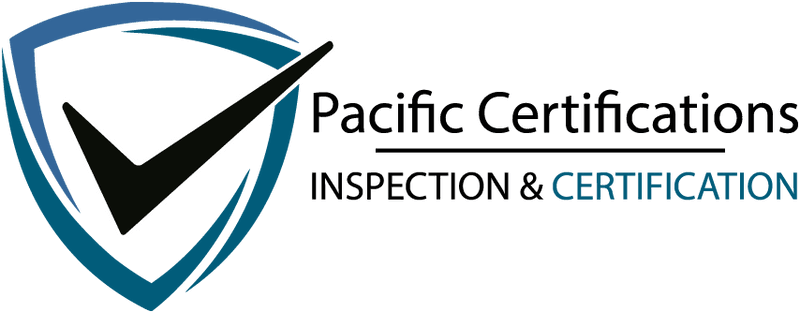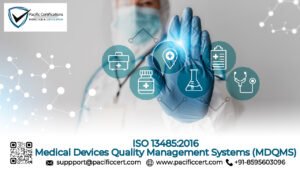ISO 12100:2010 Safety of Machinery – Certification Process, Requirements, and How Pacific Certifications Can Help
ISO 12100:2010 outlines the fundamental concepts, principles, and methodologies for achieving safety in machinery design through effective risk assessment and risk reduction. It serves as the benchmark for manufacturers and integrators seeking to minimize machinery-related hazards throughout the equipment lifecycle. The standard provides a structured approach for identifying hazards, estimating and evaluating risks, and implementing protective measures to achieve acceptable safety levels.

Compliance with ISO 12100 ensures the production of safer machinery and facilitates regulatory compliance, including meeting the essential health and safety requirements under the EU Machinery Directive. It is a core reference standard that supports other machinery-specific standards like ISO 13849 (functional safety) and ISO 14120 (guards).
For expert support in aligning with ISO 12100:2010, contact support@pacificcert.com.
Scope and Importance of ISO 12100
ISO 12100 provides a comprehensive framework for:
- Hazard Identification: Systematically recognizing hazards associated with machinery.
- Risk Assessment: Evaluating the likelihood and severity of harm arising from those hazards.
- Risk Reduction: Applying a three-step method: inherently safe design measures, safeguarding and complementary protective measures, and information for use.
This standard is not limited to specific machinery types but is applicable across all sectors where machines are designed, built, operated, and maintained. Following ISO 12100 principles leads to safer products, reduced accidents, minimized liability risks, and enhanced market reputation.
For complete implementation assistance, reach out to support@pacificcert.com.
Certification Process and Procedure
- Hazard Identification:
- Thoroughly review the machinery’s intended use and reasonably foreseeable misuse scenarios.
- Identify potential mechanical, electrical, thermal, noise, vibration, and ergonomic hazards.
- Risk Assessment:
- Estimate the severity of harm and the probability of occurrence.
- Evaluate risks to determine if they are acceptable or require reduction.
- Risk Reduction Strategy:
- Apply risk reduction measures following the three-step hierarchy: design, safeguarding, and user information.
- Integrate safety principles directly into the machine’s design.
- Validation and Verification:
- Test and verify that the risk reduction measures effectively minimize risks.
- Technical Documentation:
- Compile risk assessment records, design specifications, safeguarding plans, and user manuals.
- Internal Audits and Management Reviews:
- Regular internal reviews to ensure compliance throughout design and development.
- Certification Audit:
- Pacific Certifications conducts an external audit evaluating the risk assessment methodology, documentation, and implementation.
- Certification Issuance:
- ISO 12100 certification granted upon successful audit.
Start your certification project today by contacting support@pacificcert.com!
Documents Required for Certification
- Risk Assessment Reports
- Hazard Identification Records
- Design and Technical Specifications
- Safeguarding Concepts and Validation Results
- User Manuals and Instructions for Use
- Internal Audit and Management Review Records
- Verification and Test Reports
For detailed assistance, email support@pacificcert.com.
Eligibility Criteria
ISO 12100 certification is applicable to:
- Machinery and equipment manufacturers
- Integrators of industrial automation systems
- Designers of consumer or industrial products involving mechanical systems
- Engineering and safety consultancy firms
Confirm your eligibility today by contacting support@pacificcert.com!
Certification Fees
Certification costs vary depending on machinery complexity, number of risk assessments, and organizational size. Request a detailed cost proposal at support@pacificcert.com.
Certification Duration
The certification timeline:
- Risk Assessment and Documentation Preparation: 3-5 months
- Implementation of Risk Reduction Measures: 2-4 months
- Certification Audit and Issuance: 1-2 months
Total duration: Approximately 6-10 months, depending on project scope.
Plan your certification schedule with Pacific Certifications — contact support@pacificcert.com.
Requirements of ISO 12100:2010 Certification
Achieving ISO 12100 certification involves systematically addressing safety throughout the machinery design process. Before reaching compliance, manufacturers must ensure their processes meet the following key elements:

- Comprehensive Hazard Identification: All potential hazards across the machine lifecycle, including installation, operation, maintenance, and decommissioning, must be identified.
- Structured Risk Assessment: Consistent methodologies must be applied to estimate risk based on severity and probability of harm.
- Application of Risk Reduction Measures: Risk must be reduced as much as possible through design changes before relying on protective measures and warnings.
- Implementation of Safety Principles: Incorporate ergonomic, human factors, and safety device considerations directly into machinery design.
- Validation of Safety Functions: Evidence must be available that applied measures are effective in reducing risk to acceptable levels.
- Clear User Information: Manuals and labels must include warnings, instructions, and information on residual risks.
Master these critical requirements with the help of support@pacificcert.com or contact +918595603096!
Benefits of ISO 12100:2010 Certification
Certification to ISO 12100 offers organizations a wealth of tangible and strategic benefits. Implementing these principles demonstrates compliance and a proactive commitment to worker safety and operational excellence.

- Dramatically reduces the risk of accidents and injuries during the machine’s operation.
- Supports conformity to national and international regulations, including CE marking in Europe.
- Minimizes exposure to lawsuits and regulatory fines through documented due diligence in safety.
- Certification demonstrates commitment to global best practices, facilitating access to regulated markets.
- Proactively addressing risks reduces costs associated with workplace injuries, machine failures, and downtime.
- Customers prefer purchasing safe, certified machinery that meets global safety expectations.
- Encourages designers to integrate safety early, often leading to more robust, efficient products.
As automation, robotics, and AI-integrated machinery rapidly evolve, regulatory bodies and industries alike are placing heightened emphasis on functional safety and risk management. ISO 12100 is increasingly referenced in tender documents, product certifications, and supplier audits worldwide. Manufacturers adopting ISO 12100 principles early gain a critical edge in a fiercely competitive and safety-conscious marketplace.
Stay ahead of the competition by certifying to ISO 12100:2010 — contact support@pacificcert.com for assistance!
How Pacific Certifications Can Help
We at Pacific Certifications offer comprehensive support for ISO 12100 compliance:
- Industry specialists with extensive knowledge in mechanical and functional safety.
- End-to-end services from gap analysis to certification issuance.
- Enhances international credibility and market acceptance.
- Ongoing support to maintain compliance and manage evolving risks.
Start your ISO 12100 certification journey today by contacting us at support@pacificcert.com.
Frequently Asked Questions (FAQs)
Is ISO 12100 certification mandatory?
While not mandatory globally, it is strongly recommended for demonstrating compliance with the EU Machinery Directive and other national safety regulations.
Can ISO 12100 integrate with ISO 13849 or ISO 45001?
Yes, ISO 12100 can be integrated with functional safety standards like ISO 13849 and occupational health and safety standards like ISO 45001 for a comprehensive safety management system.
Does ISO 12100 apply to both new and modified machinery?
Yes, risk assessment and risk reduction principles apply to newly designed machines and significant modifications to existing equipment.
What types of hazards does ISO 12100 address?
Mechanical, electrical, thermal, ergonomic, vibration, noise, and foreseeable misuse hazards, among others.
How often should risk assessments be reviewed?
Periodically, especially after design changes, incidents, or updates to relevant standards or regulations.
Ready to get ISO 12100:2010 certified?
Contact Pacific Certifications to begin your certification journey today!
Suggested Certifications –








